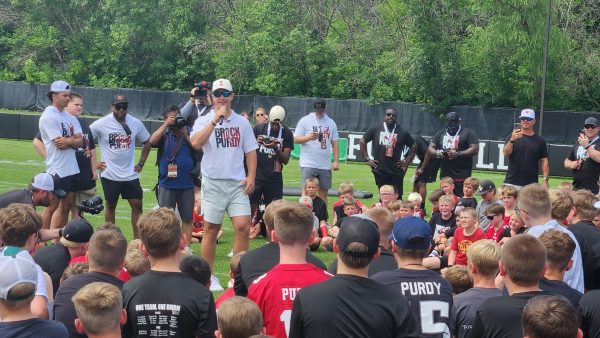Helmets reviewed to decrease concussions
March 8, 2011
Although the jury is still out on the M11 helmet’s ability to decrease concussions, more steps are being taken to support concussion prevention with relation to helmets; the most important piece of equipment in protecting concussions.
Murdoch is also a proponent of his players wearing half-masks that protect the upper-half of a players face as opposed to full-masks, which better protect a player’s mouth and chin.
“As an ex-player and current coach I feel as though they give the player better vision of the ice, and then they are more ready for hits and the impact that goes with it and keeping balance,” Murdoch said. “When you’re ready for hits your likelihood of a concussion has been shown to decrease.”
The ACHA mandates all players wear full cages in the course of competition, a rule Murdoch will argue against in the late April ACHA/NCAA coaches conference.
“It’s something that I’ll bring up,” Murdoch said. “At the World University Games [in February], everyone wore half-shields, and there were no concussions in the games I was a part of.
“When we went up to Canada [in late November to play non-ACHA ruled games] the majority of our team wore them. I’ll show the evidence to support my claim for half-shields at the meeting.”
“Also, when you don’t have that shield protecting you, you are less likely to use it as a weapon when you launch yourself into your opponent. As an example, think of how less aggressive hitting in the NFL would be if they wore no facemasks.”
Although the half-shields may increase players’ dental visits, it can help reduce much more severe injuries, such as spinal and neurological injuries.
Half shields may contribute to more players wearing their custom-fit mouth guards. Even though the wearing of mouth guards is required, Johansson believes it is not enforced enough, even though they cannot only help with mouth protection, but concussion protection also.
“Fortunately most of our guys do wear their mouth guards,” Johansson said. “I absolutely believe that mouth guards do decrease the risk of concussion, and recent studies have shown that.”
A recent survey conducted by the Mayo Clinic indicated that of 94 hockey players, only 72 of them wore mouth guards at all times.
Former Cyclone hockey player Pete Majkozak agrees with Johansson when it comes to not all players wearing their mouth guards.
“I have one but I rarely wear it now or even when I was at Iowa State,” Majkozak said. “I know it’s stupid, but I hate those things.”
This is surprising considering Majkozak suffered a concussion in his freshman year at Iowa State. Neurologists said once a person suffers a concussion, he is as much as four times more likely to sustain a second one, according to an Oct. 21 New York Times article.
Majkozak graduated from Iowa State in spring 2010, and is currently playing for the Liege Bulldogs in Belgium. The most notable difference in European hockey compared to North America is the size of the rinks. While both rinks are typically 200 feet in length, European rinks are, on average, 13 feet wider, at an average of 98 feet. This leads to more skating area and less collisions.
“There are definitely less concussions in Europe,” Majkozak said. “Because the ice surfaces are bigger here, that leads to less hitting.”
Murdoch is a proponent of the wider rink, and hopes the next arena Iowa State plays in has wider dimensions.
However, a wider rink is much more costly. Dr. Michael J. Stuart said in the Mayo Clinic’s report that a recent ice renovation to increase rink width in Rochester, Minn., was estimated at $1 million.
“A wider rink no doubt would lead to fewer hits and fewer concussions,” Murdoch said. “Hopefully down the road we can have a rink with a wider surface area, and more flexible glass.”
Iowa State’s current facility uses tempered glass above the solid baseboards as opposed to Plexiglass.
“At the conference they also proved that it’s been shown that Plexiglass has more give upon impact and decreases concussion rates,” Murdoch said. “Which makes sense because when you hit the tempered glass it’s like hitting a brick wall. It hurts.”
“In Europe a lot of rinks don’t even have glass along the sides, which I think also leads to fewer concussions,” Murdoch said. “And when I grew up we didn’t have glass either. But that wouldn’t happen in North America today with all the fan safety issues.”
Majkozak agreed, but gave fans some caution.
“There probably is fewer concussions because of the lack of glass away from the goals,” Majkozak said. “But, man, fans really have to have their head on a swivel and be prepared and into the game.”
While the movement has begun to develop better player safety equipment to reduce concussions, a lot of the problem simply has to do with recognition and the tough-guy attitude of hockey players.
“Hockey players are tough,” Murdoch said. “They may not always tell you when they’ve had their bell rung.”
Current Cyclone senior Jordan Pascale backed up Murdoch’s point.
“I’ve had at least one concussion when I was 13 or 14,” Pascale said. “I’m not entirely sure though, it could be more.”
















